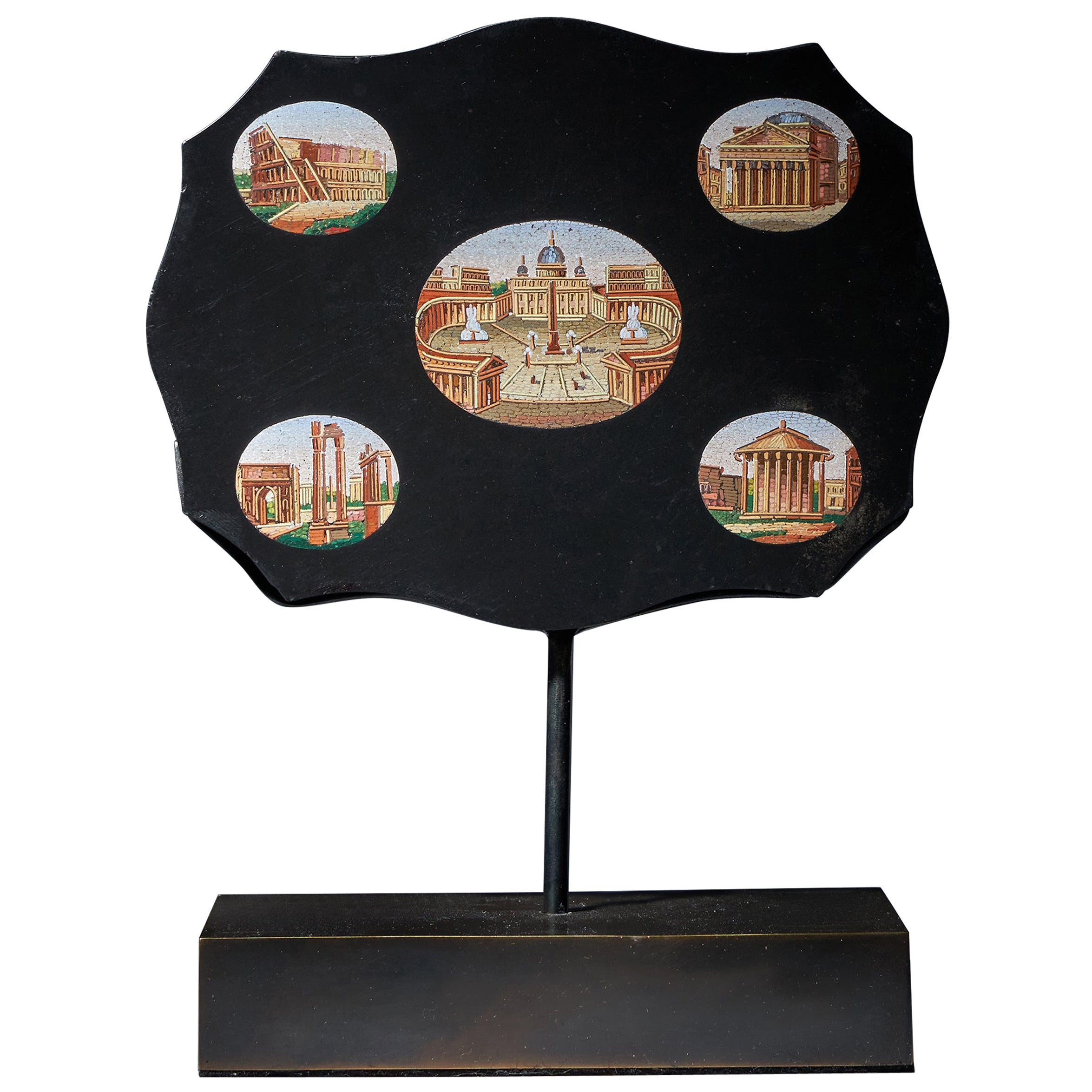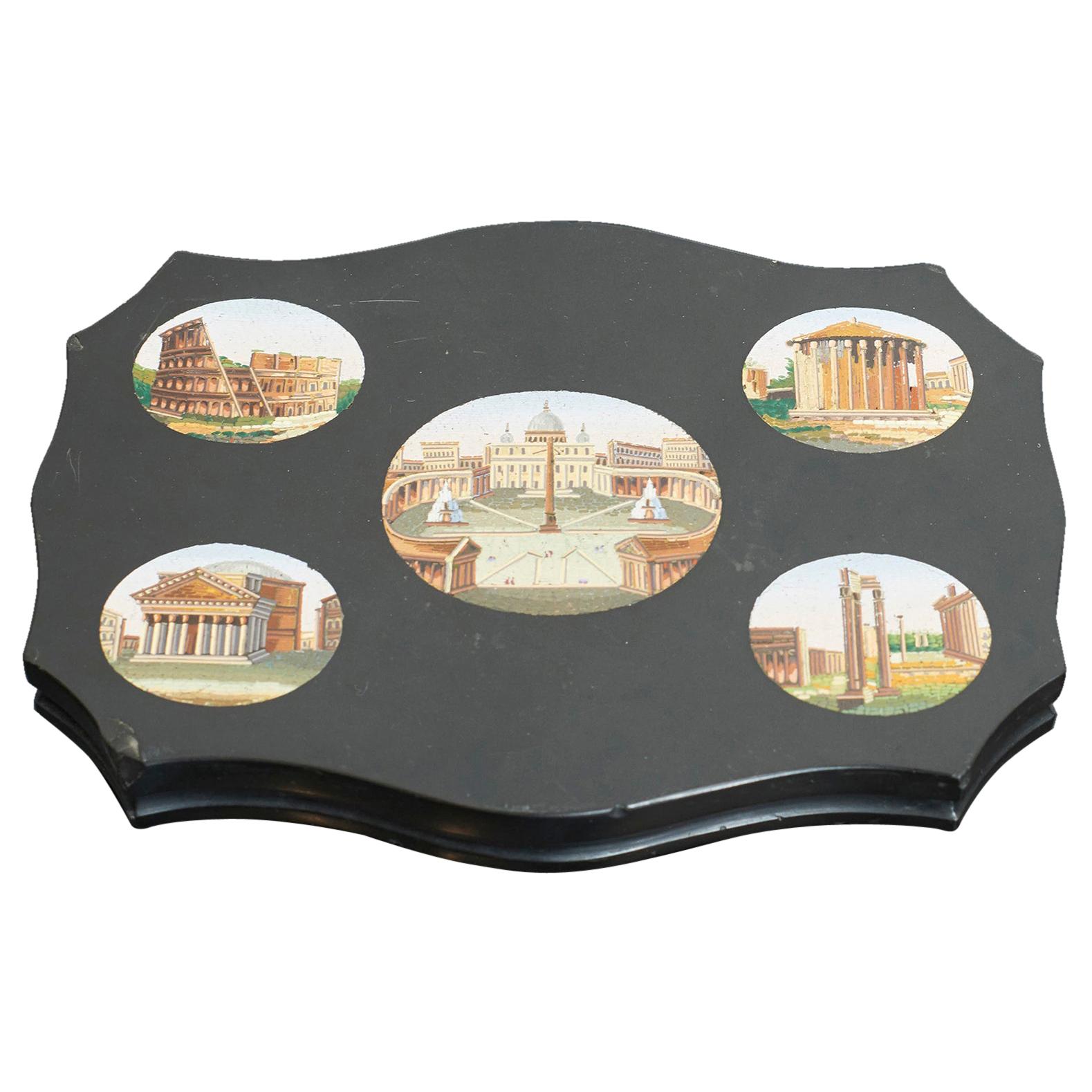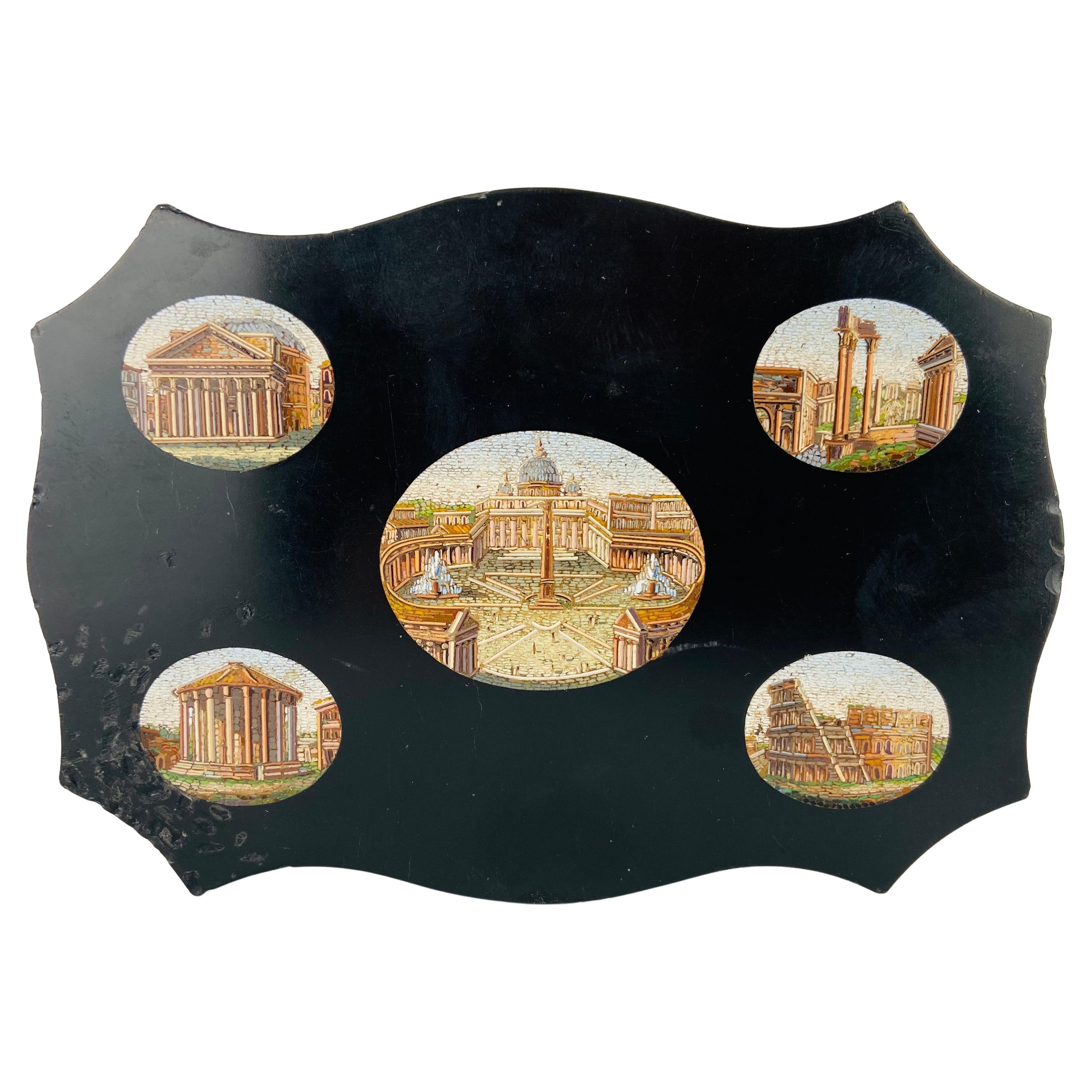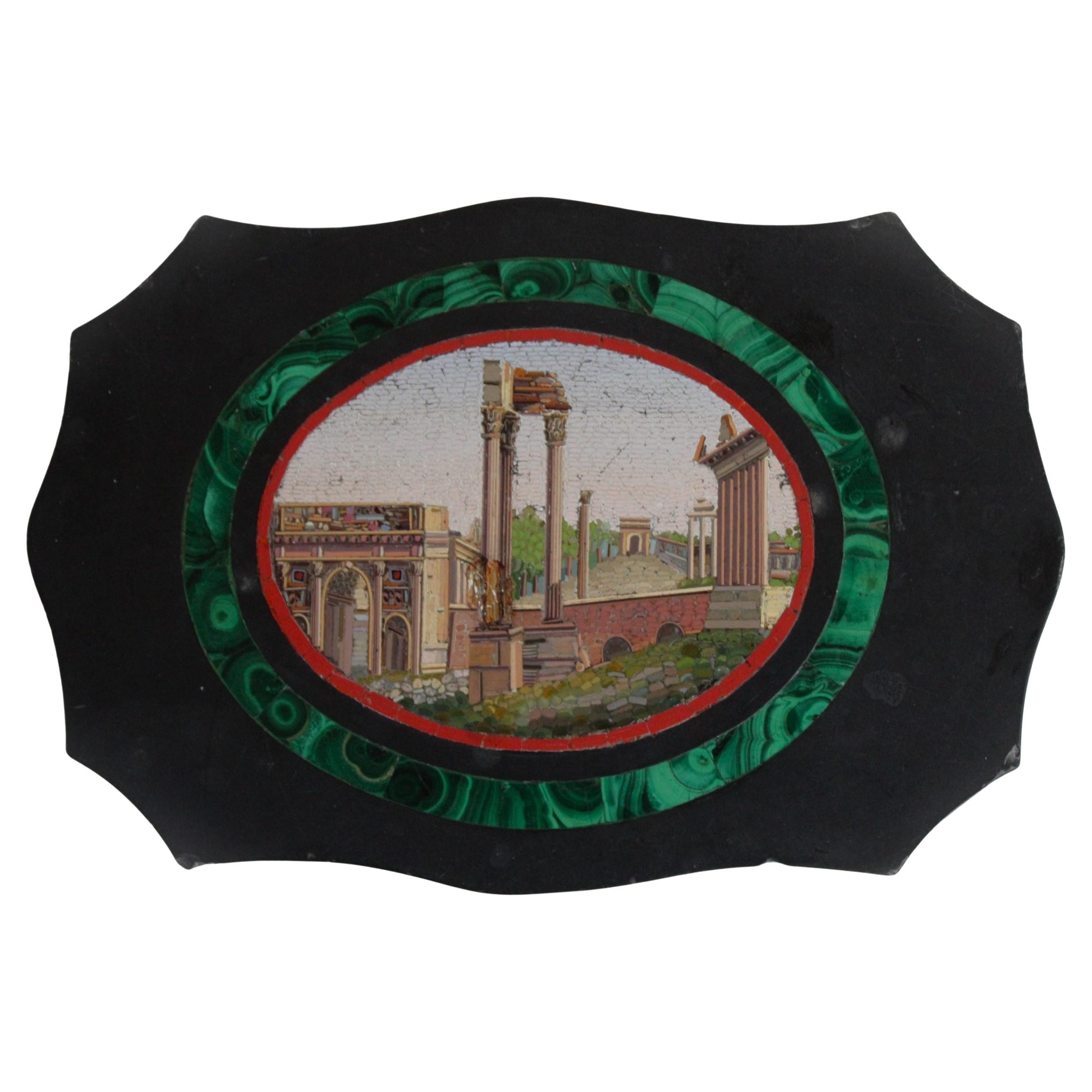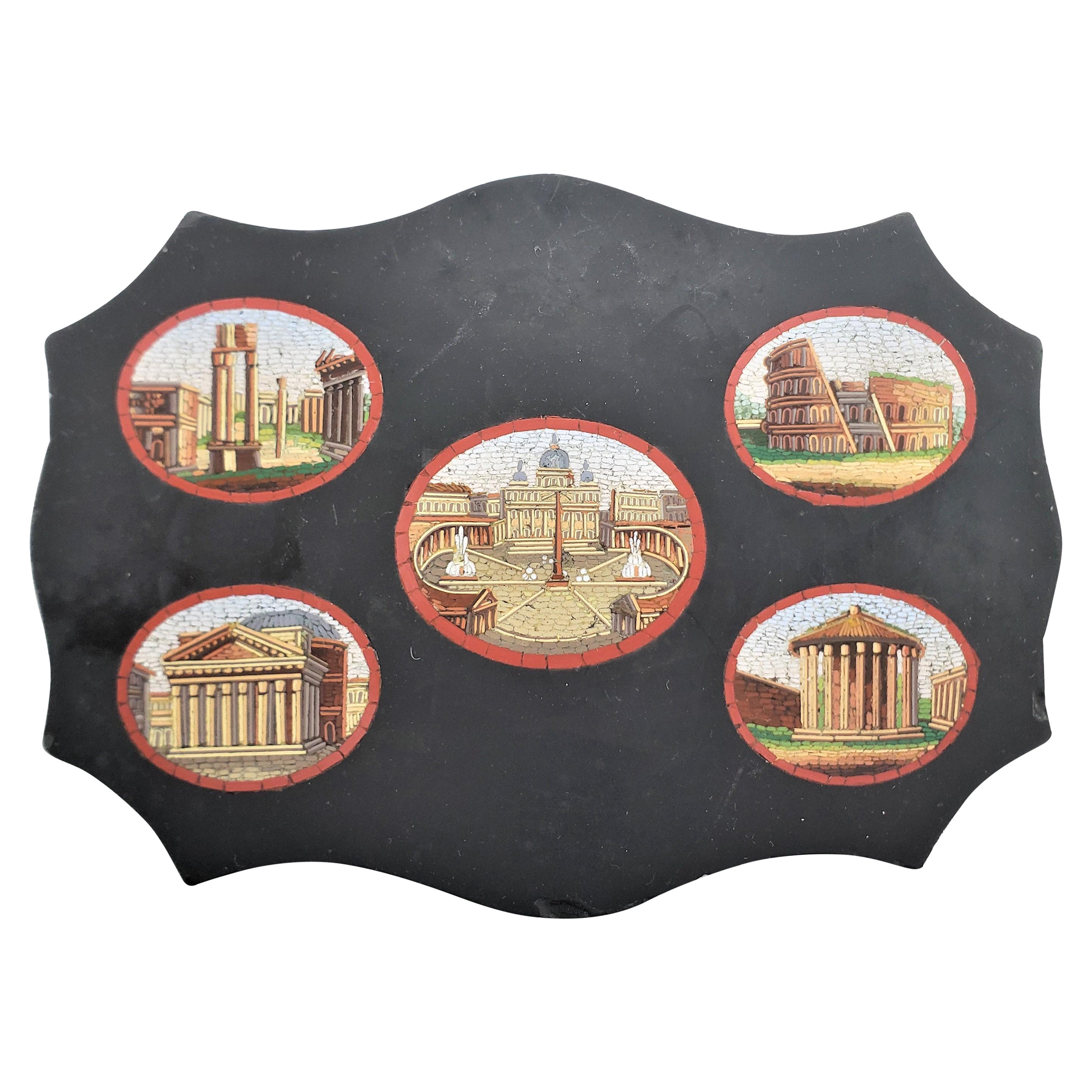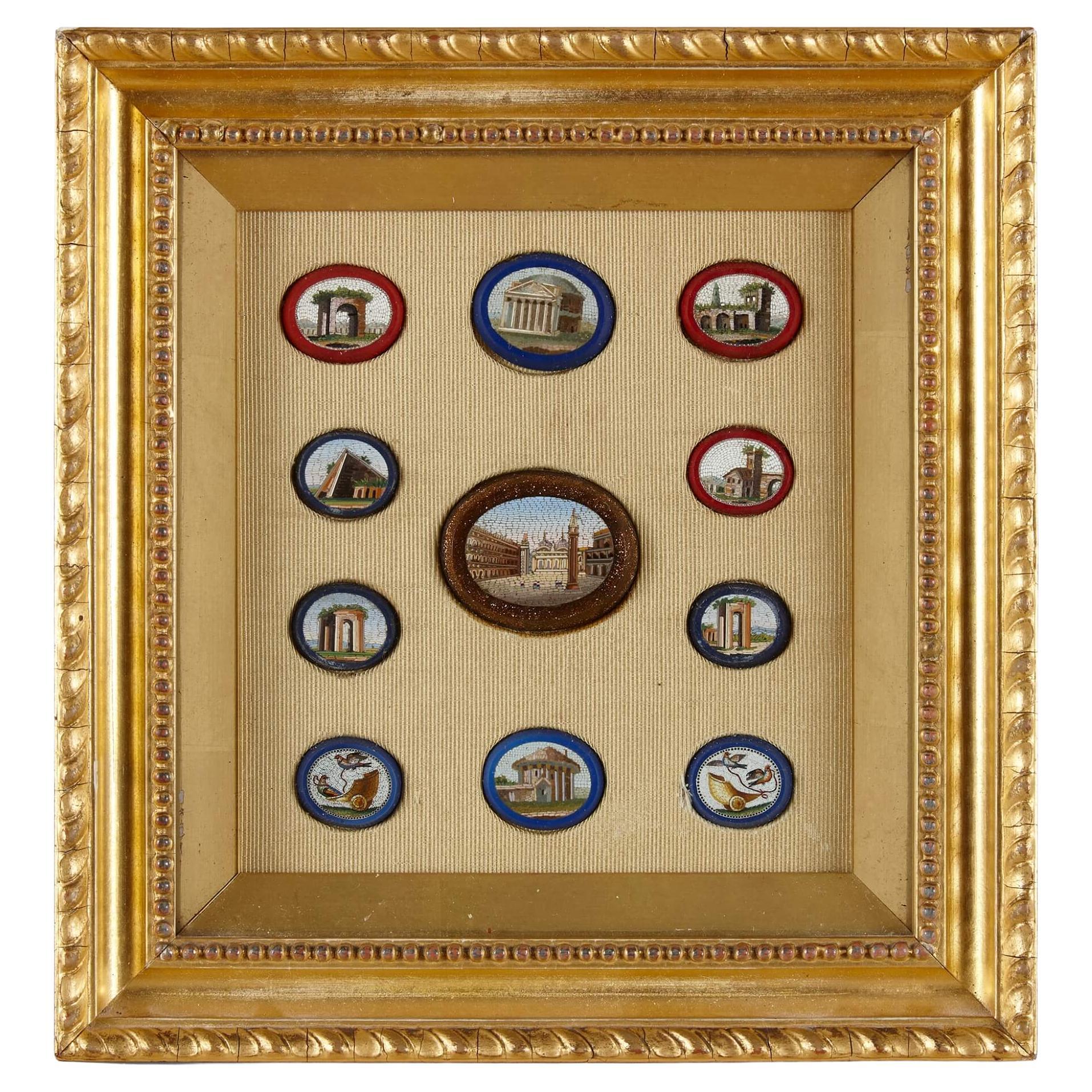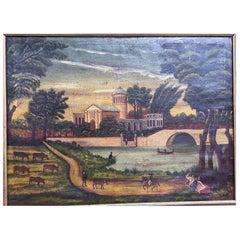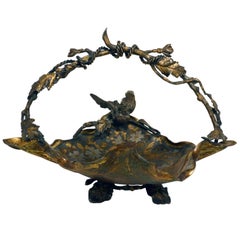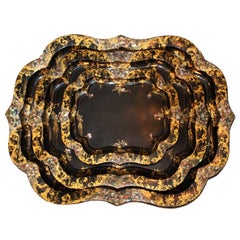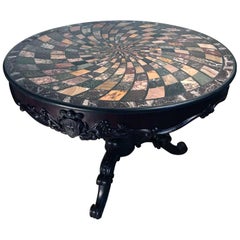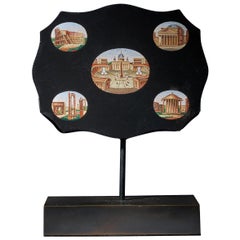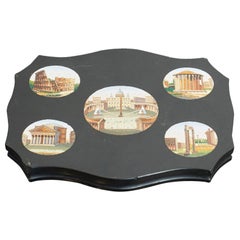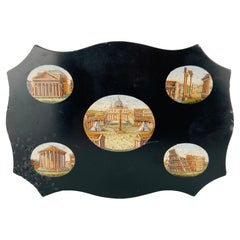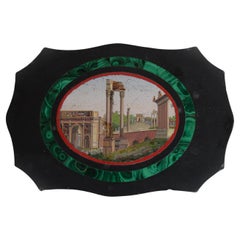Items Similar to Superb Quality Antique Micro-Mosaic Grand Tour Souvenir of a Visit to Rome
Want more images or videos?
Request additional images or videos from the seller
1 of 8
Superb Quality Antique Micro-Mosaic Grand Tour Souvenir of a Visit to Rome
$4,500
£3,401.44
€3,908.86
CA$6,266.22
A$6,970.92
CHF 3,654.24
MX$85,182.89
NOK 46,532.20
SEK 43,803.63
DKK 29,178.17
Shipping
Retrieving quote...The 1stDibs Promise:
Authenticity Guarantee,
Money-Back Guarantee,
24-Hour Cancellation
About the Item
Superb quality antique micro-mosaic Grand Tour Souvenir of a visit to Rome. set with seven panels, vignettes of Roman views in a shaped slate tablet. and in original frame. Part of a Gentleman's education was a visit to Rome, it still is.
Such micro-mosaics are found in a variety of quality, usually pretty good, but these are outstanding. The original molded frame has a reddish brown tone and traces of textured old varnish. We like it that way. It adds certain credibility and helps to date the views. The central panel is of course St Peter's .
- Dimensions:Height: 4.75 in (12.07 cm)Width: 6.5 in (16.51 cm)Depth: 1.25 in (3.18 cm)
- Style:Grand Tour (Of the Period)
- Materials and Techniques:
- Place of Origin:
- Period:
- Date of Manufacture:1840
- Condition:Wear consistent with age and use. minor losses to the two left hand panels, there is a chip at 8 o'clock, stuck back in, but with a small piece missing. The varnish on the cushioned frame is clumped, and there are a few white spots. We sell this entirely as found.It is well presented.
- Seller Location:Montreal, CA
- Reference Number:Seller: D29811stDibs: LU87538071303
About the Seller
4.8
Gold Seller
Premium sellers maintaining a 4.3+ rating and 24-hour response times
Established in 1985
1stDibs seller since 2009
220 sales on 1stDibs
Typical response time: 2 hours
- ShippingRetrieving quote...Shipping from: Montreal, Canada
- Return Policy
Authenticity Guarantee
In the unlikely event there’s an issue with an item’s authenticity, contact us within 1 year for a full refund. DetailsMoney-Back Guarantee
If your item is not as described, is damaged in transit, or does not arrive, contact us within 7 days for a full refund. Details24-Hour Cancellation
You have a 24-hour grace period in which to reconsider your purchase, with no questions asked.Vetted Professional Sellers
Our world-class sellers must adhere to strict standards for service and quality, maintaining the integrity of our listings.Price-Match Guarantee
If you find that a seller listed the same item for a lower price elsewhere, we’ll match it.Trusted Global Delivery
Our best-in-class carrier network provides specialized shipping options worldwide, including custom delivery.More From This Seller
View All18th Century Naive Landscape
Located in Montreal, QC
An 18th century naive landscape, in the middle ground is a neoclassical structure and round tower, the forerground with an extensive landscape depictin...
Category
Antique Late 18th Century Unknown Folk Art Paintings
Materials
Paint
Aesthetic Movement Tromp L'Oeil Basket
Located in Montreal, QC
An American Aesthetic Movement Basket, naturalistically modeled as a bird perched on a a leafy twig, above a shallow dish simulating cloth, decorated with gilt and silvered leaves an...
Category
Antique Late 19th Century French Aesthetic Movement Decorative Baskets
Materials
Bronze
$1,260 Sale Price
30% Off
Graduated Set of Three Victorian Papier Mâché Trays
Located in Montreal, QC
Graduated set of three Victorian papier mâché trays, with serpentine ogee borders, inlaid with mother'o pearl floral sprays and gilded, with scrollwork edging. Trays measure 31" x 24...
Category
Antique 19th Century English Victorian Serving Pieces
Materials
Lacquer
Specimen Marble-Topped Table, Grand Tour
Located in Montreal, QC
This is a rare and superb survival. Not merely do we have this intricately inlaid parquetry top, resplendent with various coloured marbles, but we even have the original walnut cente...
Category
Antique Mid-19th Century Italian Grand Tour Center Tables
Materials
Marble
Antique Capo di Monte Oval Casket
Located in Montreal, QC
This box is an unusually large and decorative example of the work of this factory. Both highly ornamental and functional, it is ideal for dressing table or more formal settings. The ...
Category
Early 20th Century German Rococo Decorative Boxes
Materials
Porcelain
$1,440 Sale Price
20% Off
Venetian Oval Beveled Glass Mirror
Located in Montreal, QC
This type of mirror is becoming increasingly difficult to find, except in modern rather nasty imitations. This example has verre eglomise panels and Murano piping, boldly shaped and ...
Category
Antique 19th Century Italian Baroque Wall Mirrors
Materials
Mirror, Murano Glass
You May Also Like
19th Century Grand Tour Micro Mosaic Tablet Depicting Italian Architecture
Located in Oxfordshire, United Kingdom
A fine mid-19th century serpentine grand tour micro mosaic tablet or paperweight of the iconic St Peter's Vatican, The Colosseum of Rome, The Pantheon, The Ruins of The Roman Forum a...
Category
Antique Early 19th Century Italian Grand Tour Decorative Art
Materials
Belgian Black Marble
19th Century Grand Tour Micro Mosaic Tablet with Roman Views
Located in Kastrup, DK
19th century Micro Mosaic tablet with five oval panels with Roman views, approx. 1860-1880.
Very fine tesserae and small briquettes of semi-precious stone...
Category
Antique 19th Century Italian Grand Tour Wall-mounted Sculptures
Materials
Stone, Marble
Micro mosaic tablet, 19th Century
Located in 'S-HERTOGENBOSCH, NL
A fine mid-19th century serpentine grand tour micro mosaic tablet or paperweight of the iconic St Peter's Vatican, The Colosseum of Rome, The Pantheon, The Ruins of The Roman Forum a...
Category
Antique 1850s Italian Grand Tour Historical Memorabilia
Materials
Marble
Micro-mosaic Roman Forum
Located in Rome, IT
Micro-mosaic Roman Forum with inlaid frame in malachite. ADDITIONAL PHOTOS, INFORMATION OF THE LOT AND SHIPPING INFORMATION CAN BE REQUEST BY SENDING AN EMAIL
Tags: micro-mosaico Fo...
Category
Mid-20th Century Italian Picture Frames
Materials
Precious Stone
$6,228
Antique Grand Tour Micro-Mosaic Paperweight with Vatican Vignettes
Located in Hamilton, Ontario
This antique Grant Tour micro-mosaic paperweight is unsigned, but presumed to have originated from Italy, or possibly the Vatican City, and dating to approximately 1880 and done in t...
Category
Antique Late 19th Century Italian Victorian Paperweights
Materials
Slate
Framed Set of Eleven Micromosaic Plaques of Italian Monuments
Located in London, GB
A framed set of eleven micromosaic plaques of Italian monuments
Italian, 19th century
Measures: Height 22cm, width 21.5cm, depth 2.5cm
Made du...
Category
Antique 19th Century Italian Grand Tour Models and Miniatures
Materials
Giltwood
More Ways To Browse
Micro Mosaic
Micro Mosaic Italian
Micro Mosaic Art
Antique Micro Mosaic
Micro Mosaics 19th Century
Grand Tour Mosaic
Roman Souvenir
Micro Mosaic Frame
Micro Mosaics Grand Tour
Roman Micro Mosaic
Roman Mosaic Panel
Folk Art Cow
Foo Lion Dog
Framed Movie Poster
French Chinoiserie Cabinets
Garden Drum
Giltwood Fragments
Green Lacquered Chest
